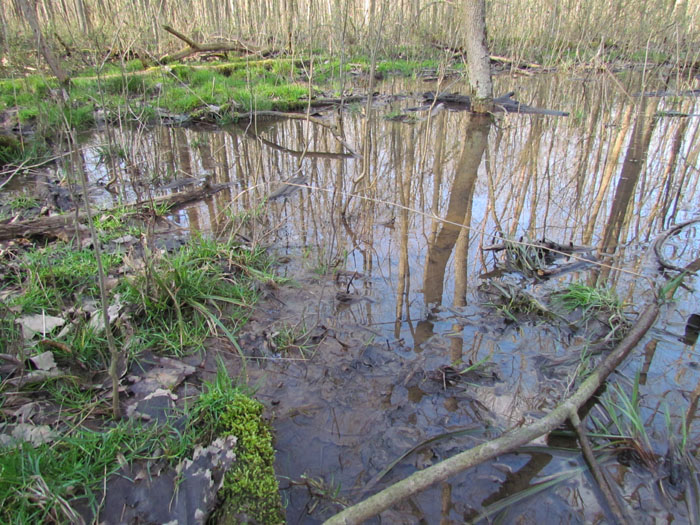Hiking through the Metroparks today, I heard the sound of frogs calling off in the distance. I had not been to the spot I was exploring in the springtime and was unaware that there were vernal pools deeper in the woods. The frog calls were not the “peeps” of Spring Peepers or the chicken-like sounds of Wood Frogs. They weren’t even the long, melodious trills of American Toads – they were from something different. As I approached the woodland pool, here’s what it looked like.
It was the sounds of a frog I have not seen for five years. This frog’s call resembles the sound made by rubbing one’s finger over the teeth of a hard plastic comb; a long cr-e-e-e-e-e-k. It was the Western Chorus Frog, which is about the same size as the Spring Peeper. It can be identified by its three distinctive dark stripes which normally run down the back, and a dark stripe on each side. Since it was still daylight, I needed to use quite a bit of stealth to locate one – they are quite wary. Here’s a short video with the sounds I heard.
Western chorus frogs are widely distributed throughout Ohio. They become rare in northeastern Ohio east of Cleveland. It took some time, but I was finally able to spot this male calling.
These frogs feed on a variety of small invertebrates including beetles, ants, flies, leaf hoppers, and spiders. Their only defense is their small size which they use to attempt to conceal themselves from the many birds, mammals, garter snakes, and other larger frogs which all enjoy preying upon them. Here’s what a female carrying eggs looks like.







